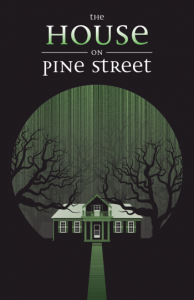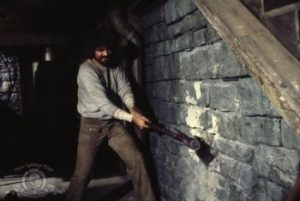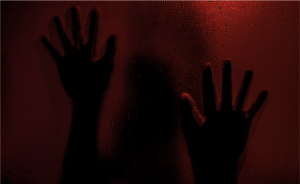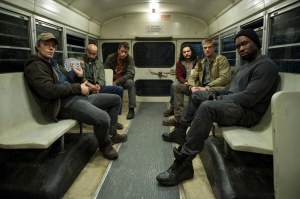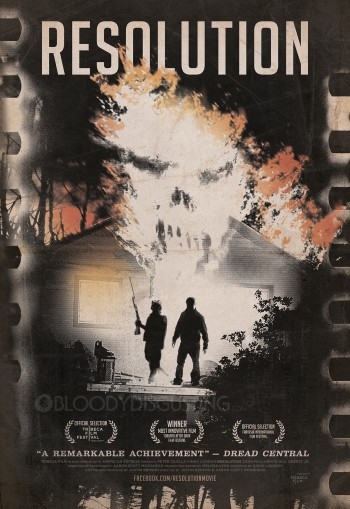
Resolution Horror Review
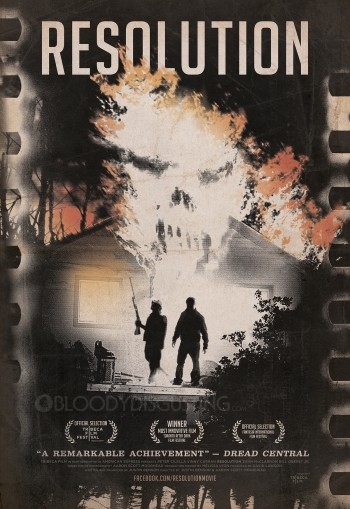 Ambiguity abounds in Justin Benson and Aaron Moorehead’s Resolution. This low-budget drama horror leaves you with questions you may never have an answer to. I belong to the camp that believes this to be a good thing. This article may dive into the spoiler zone, but how much can you give away about a film whose plot can be indecipherable? It’s like writing an essay on David Lynch’s Lost Highway, you may provide every plot point you feel is present but with each viewing your perception will change.
Ambiguity abounds in Justin Benson and Aaron Moorehead’s Resolution. This low-budget drama horror leaves you with questions you may never have an answer to. I belong to the camp that believes this to be a good thing. This article may dive into the spoiler zone, but how much can you give away about a film whose plot can be indecipherable? It’s like writing an essay on David Lynch’s Lost Highway, you may provide every plot point you feel is present but with each viewing your perception will change.
The film’s title plays an important role in trying to provide meaning. Resolution can mean the ending of a story, the will to follow through, or describe the clarity of an image. This film discusses all three. It takes a while for total bewilderment to set in.
The film begins with a low resolution internet video featuring Chris Daniels (Vinny Curran). He is shown shooting a pistol in the air, frolicking through the woods, playing with a dog, and long bouts of screaming into the sky. He also does a lot of crack/meth – we’re never too sure which one. Peter Cilella plays Michael, possibly the only friend Chris has left. When Michael sees the video he decides to make one last attempt at an intervention.
Michael ventures deep into the redneck meth territory of his youth on his way to find Chris. When we first meet Chris, he is sitting on a porch of a dilapidated shack and shooting at imaginary birds. Michael gets him inside quickly and handcuffs him to the wall. Soon our two sets of tangible villains make themselves known. One set is Chris’ drug addict cohorts who believe he has their stash. The other set is a Native American gang who resent them for squatting on reservation land. These foes are only a catalyst; something more sinister lurks in the woods.
Most of the film occurs within the one room shack. Chris and Michael discuss the past and their teetering friendship. Chris offers an explanation to his drug problems: he wishes to snuff out his existence through excess. His addiction is a form of suicide. Michael wishes to help him, only as a form of feeling better about himself. While their dynamic takes center stage, the woods around them begin to show them various narratives of death. First, Michael finds a box of pictures which leads him to a shed where he finds a record. Next, he finds slides, then 8mm footage, digital footage, a CD, and 35mm. Each piece of media contains a story of death.
Michael learns that the cabin was once rented by a couple of French students researching folklore, but they went missing years ago. Each character Michael encounters reiterates that there is something special about the woods. When he meets a local hermit, who is fixated on how stories are composed, we start piecing the film together. Michael is told that each story has a beginning, middle, and end. The hermit reflects his image in a mirror – a glimpse at an infinite cycle. This not only pertains to stories, but also theories of the spirit world.
Theories about ghosts normally describe the entities as tied to events surrounding their death and forced to repeat those events forever. They are caught in an endless loop until they can be jarred out of it. As an example, consider Neil Jordan’s High Spirits. Even though High Spirits is a comedy it showcases this theory. Steve Guttenberg’s character interrupts the nightly haunting and unwittingly sets the ghost free. In Resolution, the plot like a ghost, is an endless loop.
Some reviews compare Resolution to Cabin In The Woods which is a fair critique. In Cabin, the controllers must create fictions to appease the old ones. In Resolution, we are the controllers, and it is our job to decipher a proper ending. Chris and Michael are shown various endings via the different media formats, and together they choose which path to take. They even ask the woods if they can try again. This prompts the viewer to watch the film again to see what ending we – the audience – wish for.
Even though the film, when seen again, will show the plot exactly the same way, our perception of the film will be different. The film will loop, but our idea of its resolution will differ. Jason Benson and Aaron Moorehead have masterfully crafted a heady micro-budget dialogue film. By leaving everything within their story ambiguous, they have achieved an intellectual variant on the concept of meta-horror. If you like your horror straight to the point or with a fully tangible villain (symbol of evil), you may want to pass on this one. If you’re game, it’s on Netflix.



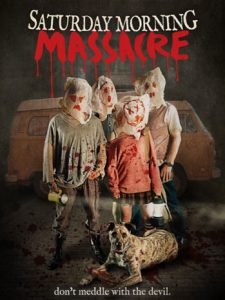
![Love in the Time of Monsters [Review]](https://www.horror-movies.ca/wp-content/uploads/2021/04/Love-in-the-Time-of-Monsters-Poster-350x531-1-198x300.jpg)
![Fantasia 2018: Puppet Master: The Littlest Reich [Review]](https://www.horror-movies.ca/wp-content/uploads/2021/04/PMLR12-UDO-KIER-350x216-1-300x185.jpg)
![[Horror Short Review] Cindy Maples’ Random](https://www.horror-movies.ca/wp-content/uploads/2021/04/Random-Poster-350x524-1-200x300.jpg)
